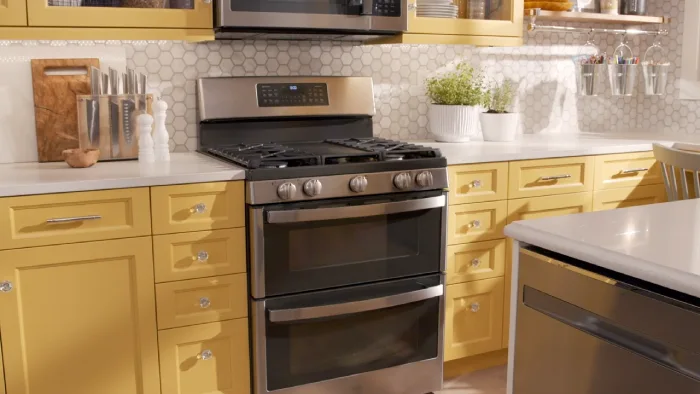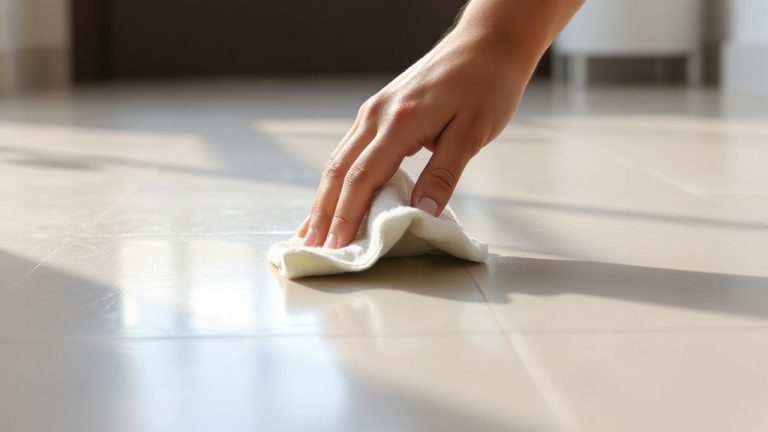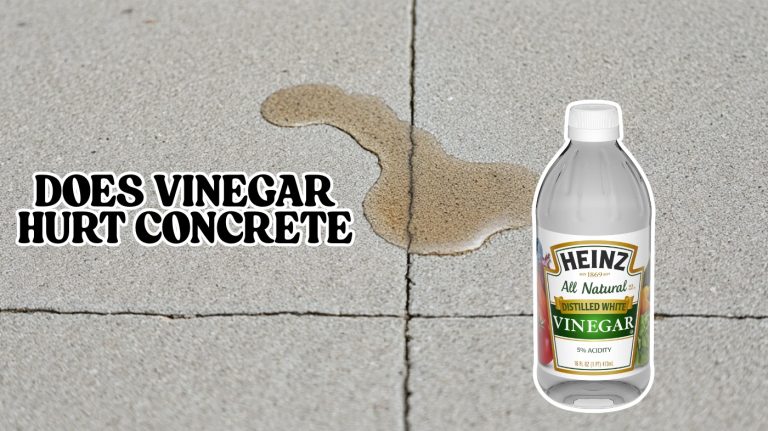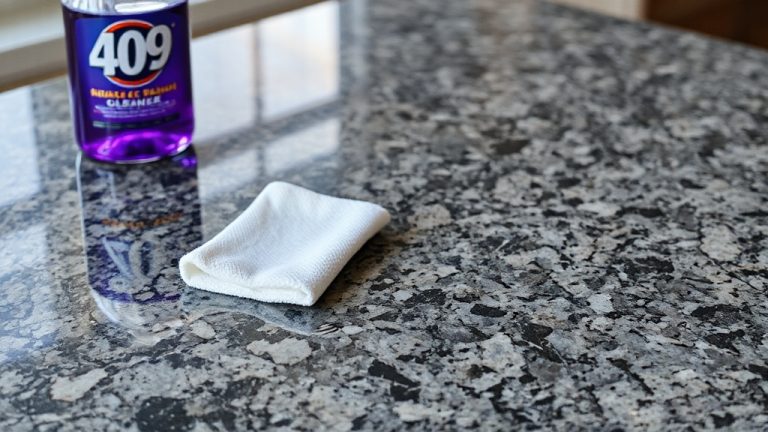Can You Use The Stove While The Oven is Cleaning: 3 Reasons [Safety]
It’s not uncommon for individuals to have questions about oven cleaning, especially when it comes to using the stove during self-cleaning. It’s important to understand that whether or not it is safe depends on the type of electric range you have.
For more modern models, using the stovetop during self-cleaning is generally safe. Just keep in mind that using both appliances simultaneously could cause your kitchen to become hotter than usual. However, using the stove during self-cleaning is not recommended for those who own older models or gas ranges.
It’s important to always refer to your owner’s manual for guidance specific to your appliance to ensure safe and effective maintenance. Here, we’ll share you all the details on how to avoid any safety hazards during your next oven cleaning session. So sit back, relax, and let’s get started.
What Precautions Should be Taken When Cleaning Your Stove?
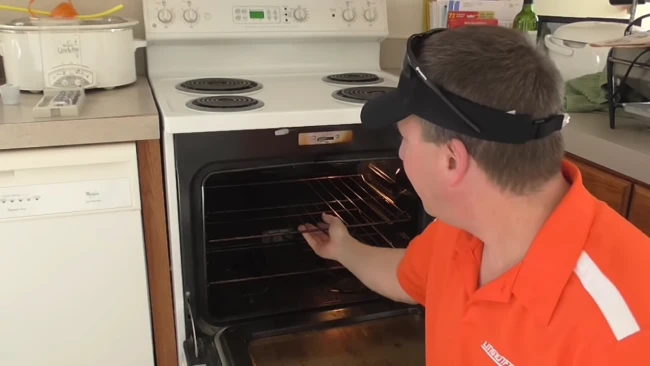
Ensuring safety and proper ventilation are crucial when operating kitchen appliances with oven cleaning. While it is possible to operate the stove while the oven is undergoing self-cleaning, important precautions must be taken to avoid potential hazards.
Here we will discuss some of these precautions.
- First and foremost, turning off the oven before using the stove is essential. The high temperature during self-cleaning can cause significant damage to cookware or even start a fire if left unattended for too long.
- Further, wearing appropriate protective gear such as long sleeves, pants, and closed-toe shoes can help prevent accidental burns or injuries from hot surfaces.
- Also, keeping flammable materials away from the stove and oven area can minimize the risk of fire.
- In addition to taking necessary precautions related directly to the stove and oven usage, proper ventilation is also critical when using these appliances during self-cleaning. Adequate air circulation helps reduce fumes buildup and heat levels in your kitchen.
- Opening windows and doors or turning on a fan can help achieve sufficient ventilation levels in your cooking space.
What Are the Risks Associated With Using the Stove Top While The Oven’s Cleaning?
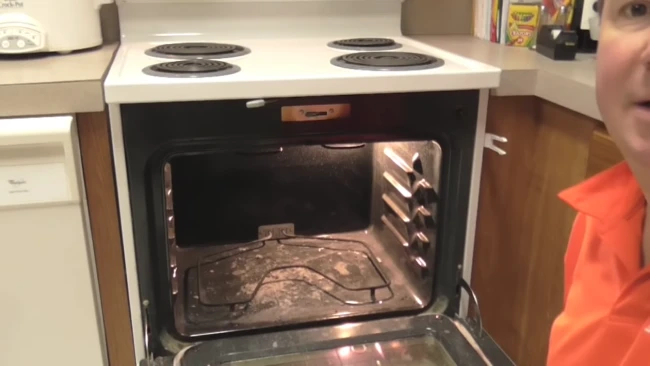
Avoid these common kitchen dangers when simultaneously using the oven’s self-cleaning feature and stovetop. The misuse of appliances can lead to safety hazards and appliance damage. Some of them are listed below:
1. Fire Hazard:
The high temperatures generated during the self-cleaning cycle of an oven can potentially ignite flammable materials, such as oven mitts, towels, and plastic bags left on or near the stovetop, which poses a significant fire hazard.
It is important to note that leaving the stovetop unattended while the oven is in cleaning mode increases the risk of fire even further. Therefore, it is essential to follow safety guidelines when using an oven’s self-cleaning feature.
To minimize the risk of fire during oven cleaning mode, one should remove all flammable materials from around and on top of the stove before initiating self-cleaning. Additionally, never leave the stove unattended while in this mode.
Even though most ovens have safety features like automatic overheat shutoffs and carbon monoxide detectors, it’s still important to be careful.
2. Overheating:
Despite the intention of self-cleaning mode to burn off food residues and debris, it ironically poses a risk of overheating that can cause harm or damage to surrounding surfaces.
This is because the self-cleaning mode generates high temperatures reaching up to 900°F, significantly higher than the temperature required for cooking. As a result, the stovetop and nearby surfaces become excessively hot during cleaning, making them vulnerable to damage or burns if touched.
Moreover, the risks of overheating are not limited to just physical damages but can also lead to fire hazards. Due to the high temperatures generated by the oven, any flammable materials left on or near the stove during self-cleaning mode could easily catch fire.
Therefore, homeowners must monitor their stoves while in self-cleaning mode and remove any flammable materials from nearby areas. Although self-cleaning mode may seem convenient for modern ovens, homeowners should use it cautiously.
3. Electrical Load:
Using a stovetop and an oven creates a heavy electrical load that can potentially overload the electrical system. This is because these two appliances require high amounts of energy to operate simultaneously.
Overloading the system can cause damage to equipment and lead to dangerous situations such as fire hazards.
It is also essential to note that electrical loads vary depending on the type of stove and oven used. For instance, electric ovens have higher wattage demands compared to gas ovens due to their heating elements.
Similarly, induction cooktops consume more electricity than gas stoves since they require electricity for their magnetic fields.
Therefore, it is crucial to consult appliance manuals or manufacturers’ websites for specific information about each unit’s power requirements before using them together. Doing this can avoid potential dangers associated with overloading circuits while using both appliances at once.
Is It Safe to Use The Stove Immediately After the Self-Cleaning Cycle Ends?
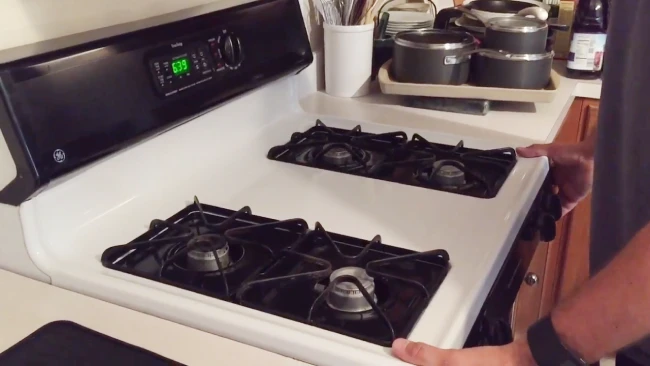
After the self-cleaning cycle ends and the oven has completely cooled, it is safe to resume usual kitchen activities. However, many people are unsure whether they can use their stoves after the self-cleaning cycle is over.
The answer to this question is not straightforward, as it depends on various factors. To begin with, it’s important to consider if your stove is connected to the same ventilation system as your oven.
If so, using your stove while the oven is cleaning may cause inadequate ventilation, leading to carbon monoxide poisoning or even a fire hazard. Therefore, you should avoid using your stove while the self-cleaning process is ongoing.
Furthermore, if your stove and oven have separate ventilation systems and are not interlinked in any way, then technically speaking, you can use your stove immediately after running a self-cleaning cycle in your oven.
Still, be careful because some residual heat may have been created by the cleaning process, posing a risk of burns or fires.
Can You Cook On the Stovetop When the Oven is Self-Cleaning?
A common question that arises is whether it is safe to use the stovetop while the oven is in self-cleaning mode. The answer depends on the type of range being used.
If you have an electric range, using the stovetop while your oven is undergoing its self-cleaning cycle is generally safe. This is because newer electric ranges are designed with separate heating elements for both the cooktop and oven.
As long as there are no overheating or malfunctioning parts issues, using your stove during this time should not pose any additional risks.
On the other hand, avoiding using any part of the appliance while your oven undergoes self-cleaning is advisable if you have a gas range. Low heat settings on gas stovetops can cause significant damage to gas burners and other components if they’re used simultaneously with gas ovens.
Additionally, other safety risks may be associated with using a gas range while an oven cleans itself. It’s always better to err on the side of caution and wait until after cleaning has been completed before using any part of your gas range again.
Does the Self-Cleaning Feature Need to Be Used Frequently?
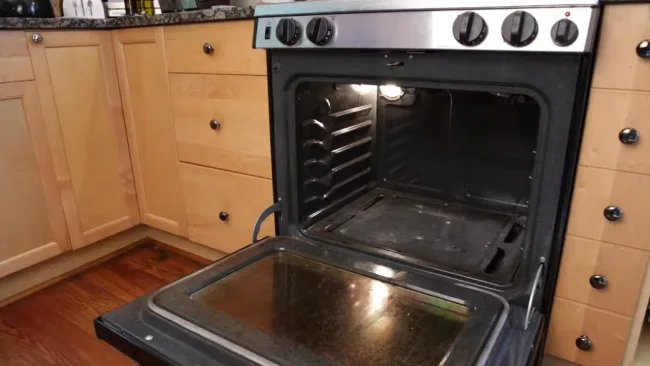
Frequent use of the self-cleaning feature on ovens is not necessary, as experts suggest that it should only be used once a year to avoid potential damage and safety hazards.
According to a report by Consumer Reports, using this function too often can cause significant wear and tear on the oven. In addition, relying too much on the self-cleaning feature can also result in higher energy consumption, which could lead to higher electricity bills.
Moreover, using the self-cleaning feature too frequently could potentially cause damage to your oven. The high temperatures generated during the cleaning cycle can weaken or break heating elements, glass doors, and even internal wiring.
This could lead to costly repairs or, even worse – electrical fires.
Therefore, it is important to follow manufacturer recommendations for the usage and frequency of the self-cleaning function.
Is It Safe to Stop a Self-Cleaning Oven Mid-Cycle?
Stopping a self-cleaning oven mid-cycle is not recommended as it may cause damage to the appliance and compromise its safety features. When the self-clean cycle is interrupted, the oven door remains locked until it cools down to a safe temperature.
This may put you at risk of burns and other injuries if you attempt to force the door open. Moreover, halting the self-clean cycle may affect the performance and longevity of your oven. Ideally, you shouldn’t stop your oven’s self-cleaning cycle and let it finish for optimal safety and performance.
Safe Use of Stove During Oven Self-Cleaning.
So it is technically possible to use your stove while your oven is self-cleaning, but it’s important to take certain precautions to ensure both appliances remain safe and free from damage. Any spillage on the oven while in use can result in a dangerous fire hazard.
To prevent this, monitoring both appliances closely while in use is essential.
Surprisingly, cooking equipment was involved in almost half of all home fires reported between 2014-2018, according to a report by the National Fire Protection Association (NFPA). The stat shows how important it is to be careful around kitchen appliances like stovetops and ovens and stay vigilant.
Being cautious when working with heat sources and following proper safety protocols can minimize the risk of fire incidents.

